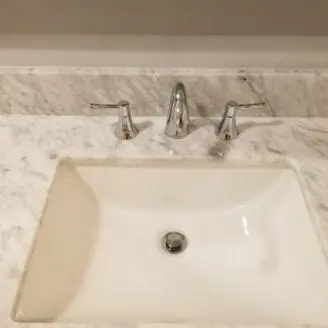
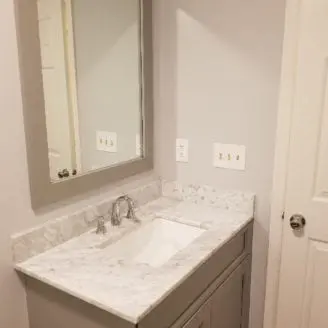
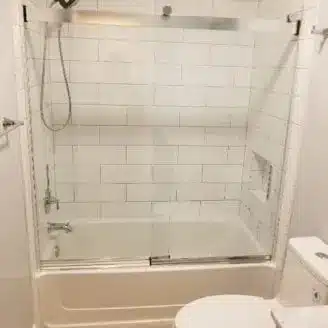
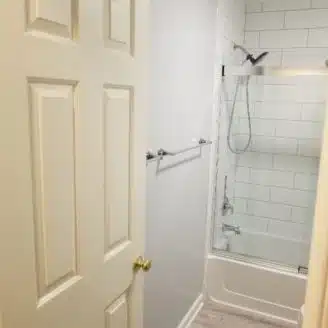
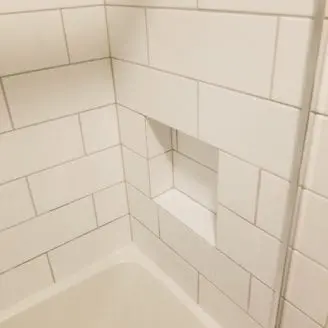
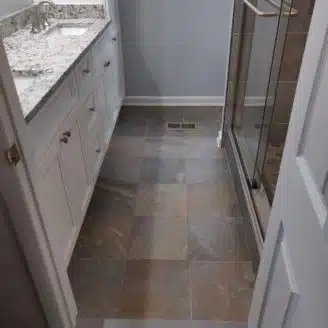
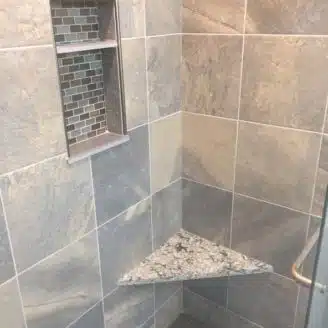
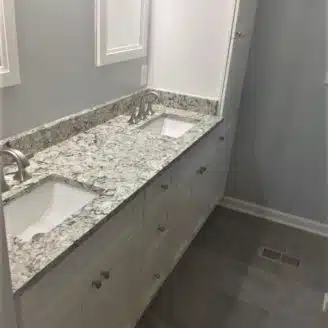
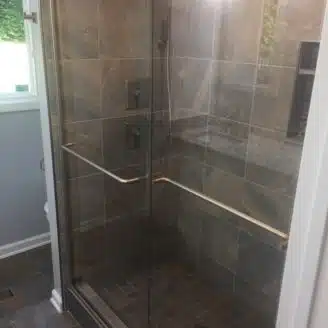
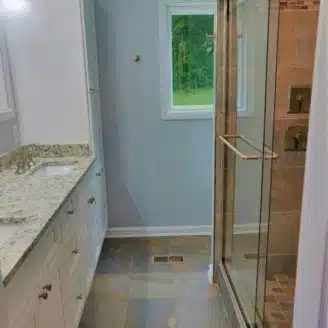
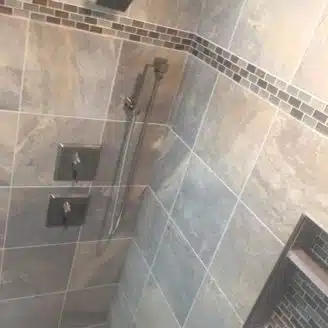
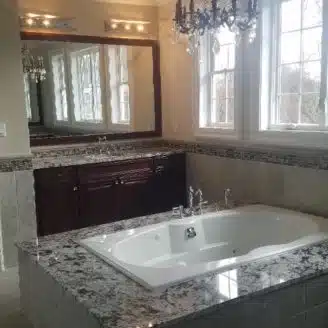
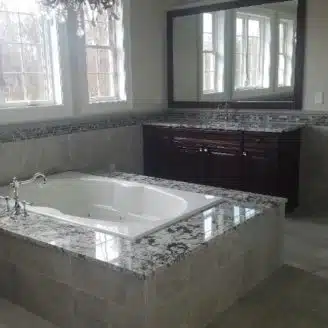
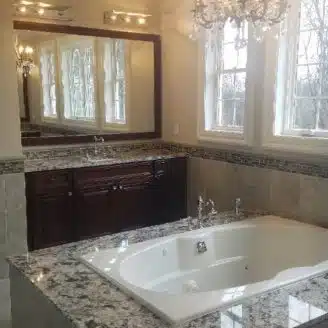
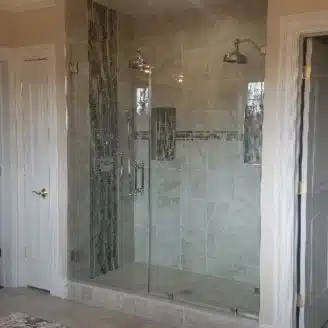
To better understand where your money goes, let’s look at the typical components of a bathroom renovation budget:
Labor (20-65%): This is often the largest portion, covering contractors, plumbers, electricians, tilers, and other skilled tradespeople.
Fixtures & Fittings (15-30%): Includes the bathtub/shower, toilet, vanity, sink, faucets, and other hardware. Quality and brand significantly impact this cost.
Materials (15-25%): Flooring (tile, LVT), wall tile, paint, drywall, waterproofing, and other construction materials. Natural stone and custom tiles will be more expensive.
Demolition & Debris Removal (5-10%): Tearing out the old bathroom and disposing of waste.
Plumbing & Electrical (5-15%): Rerouting pipes, adding new outlets, upgrading wiring for new lighting or fans. This cost increases if you change the layout significantly.
Miscellaneous & Contingency (10-20%): Always factor in a buffer for unexpected issues (e.g., discovering mold or outdated plumbing behind walls) and small design elements.
Size of the Bathroom: Larger bathrooms naturally require more materials and labor.
Scope of Work: A cosmetic refresh is far less costly than a complete gut and re-configuration.
Material Choices: Porcelain tiles are more budget-friendly than marble. Stock vanities are cheaper than custom cabinetry.
Layout Changes: Moving walls, toilets, or showers significantly increases plumbing and electrical costs.
Permits: Depending on your locality and the scope of work, permits may be required and add to the cost.
Understanding the typical stages of a bathroom remodel process can help set realistic expectations and ensure a smooth project. While every renovation is unique, here’s a general timeline:
This is where your vision comes to life! We’ll discuss your needs, style preferences, budget, and timeline. This phase includes:
Initial Consultation: Understanding your goals.
Budgeting: Establishing a realistic financial plan.
Material Selection: Choosing tiles, fixtures, vanity, countertops, paint colors.
Layout & Design: Finalizing the floor plan and aesthetic.
Permits: Securing any necessary local building permits.
Out with the old! This messy but necessary stage involves carefully removing existing fixtures, flooring, wall coverings, and sometimes even walls to prepare the space for its new design. Proper disconnection of water and electricity is paramount for safety.
Once the demolition is complete and any framing changes are made, the “guts” of your new bathroom are installed. This includes:
Plumbing Rough-in: Rerouting or installing new water supply lines and drainpipes for your tub, shower, toilet, and sink.
Electrical Rough-in: Installing new wiring for lighting, outlets, exhaust fans, and any smart home features.
HVAC: If relocating or adding ventilation.
The new bathtub or shower pan is typically installed now, along with any necessary waterproofing. Cement board or other backer board is installed on walls where tile will be applied.
New drywall is hung, taped, mudded, sanded, and primed, creating smooth, paint-ready surfaces.
This is where the aesthetics really start to take shape. Your chosen floor tiles are laid, followed by wall tiles (e.g., in the shower or around the vanity). Grouting completes this stage.
Your new vanity, medicine cabinet, and any storage units are installed, followed by the countertop.
The finishing touches are applied:
Painting: Walls and ceiling get their final coats.
Toilet & Sink Installation: New toilet and sink are set.
Faucets & Shower Trim: Water fixtures are connected.
Lighting: Light fixtures, mirrors, and exhaust fans are installed.
Accessories: Towel bars, toilet paper holders, and other accessories are mounted.
We’ll conduct a thorough inspection with you to ensure every detail meets your expectations. Any final touch-ups are made, and the space is professionally cleaned, ready for you to enjoy!
A: A minor update might take 1-2 weeks, while a mid-range full bathroom remodel typically spans 2-4 weeks. A major renovation with structural changes could take 4-8 weeks or even longer.
A: It depends on the scope. Cosmetic changes like painting or replacing accessories, tiles , trim usually don’t require permits. However, moving plumbing, changing structural elements, or altering electrical wiring almost always requires permits. We will guide you through this process.
A: Keep the existing layout to avoid moving plumbing, choose mid-range materials over high-end, consider refinishing existing fixtures if possible, and opt for stock cabinetry. DIYing simple tasks like painting can also save on labor costs.
A: Yes, a bathroom remodel typically offers a good return on investment (ROI), often recouping a significant portion of the cost at resale. Mid-range remodels tend to have the best ROI.
Contact [Your Company Name] today for a free, no-obligation consultation and personalized quote. Let’s create the bathroom of your dreams!